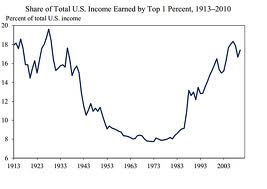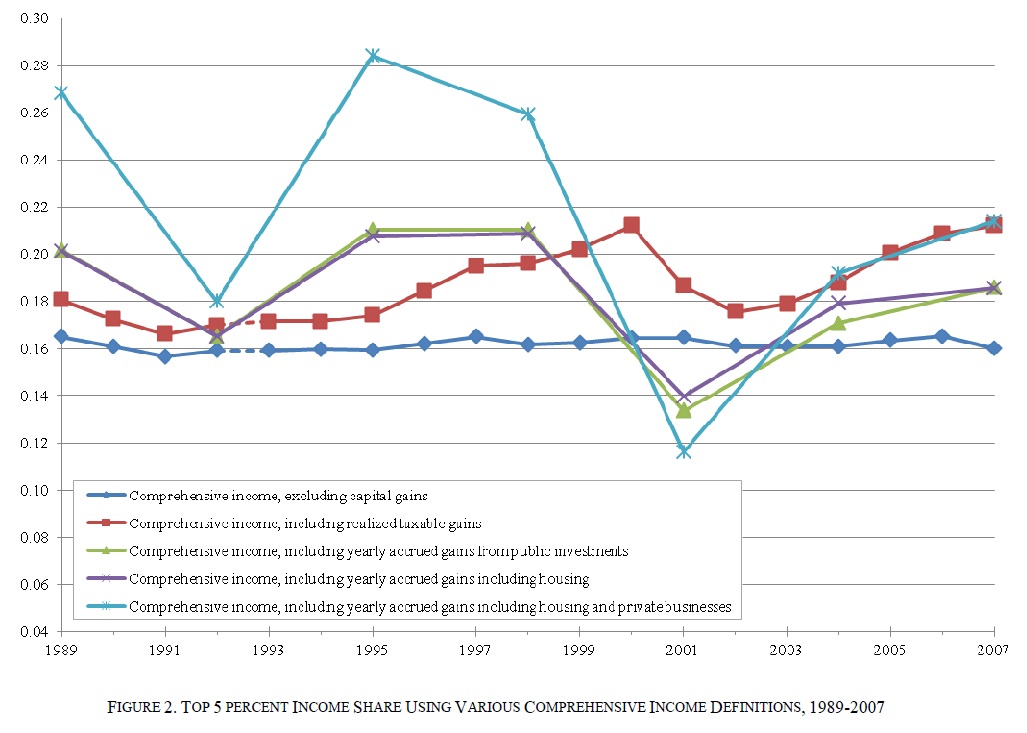Has Income Inequality Really Risen?
< < Go Back
 Few serious scholars believe that middle class and poor households have seen the income growth experienced by the top in recent decades. Both the ubiquitous estimates from economists Thomas Piketty and Emmanuel Saez and figures from the Congressional Budget Office show dramatic increases in the share of income received by the richest 1 percent of Americans. Attempts to deny that the top has pulled away generally have been wholly unpersuasive and in more than a few cases conducted with minimal regard for the truth of the matter, says Scott Winship, the Walter B. Wriston Fellow at the Manhattan Institute.
Few serious scholars believe that middle class and poor households have seen the income growth experienced by the top in recent decades. Both the ubiquitous estimates from economists Thomas Piketty and Emmanuel Saez and figures from the Congressional Budget Office show dramatic increases in the share of income received by the richest 1 percent of Americans. Attempts to deny that the top has pulled away generally have been wholly unpersuasive and in more than a few cases conducted with minimal regard for the truth of the matter, says Scott Winship, the Walter B. Wriston Fellow at the Manhattan Institute.
However, a commitment to empiricism means not only refuting sketchy claims but taking seriously well-supported ones.
Scholars, journalists and policymakers are now confronted with such a responsibility in the inequality research of Cornell economist Richard Burkhauser and his colleagues. If their latest research holds up researchers will have to rethink whether inequality has really increased since the 1980s. If inequality has not risen, that would also require policymakers to reassess the nature of various problems that are thought to be connected to it. If correct, their findings would affect debates over taxation, spending, deficits — even macroeconomic policy. The paper could even affect the political balance of power.
– From 1989 to 2007 (comparing peak years), the bottom fifth, middle fifth and top 5 percent saw gains of 26 percent, 20 percent and 17 percent, respectively, indicating a decline in inequality.
– A problem with these estimates, however, is that they do not include any income from capital gains.
When Burkhauser and his colleagues incorporate into their income figures estimates of all capital gains accrued by a household over the past year — taxable or tax-exempt, realized or not — from investments in public companies and housing, a shocking result emerges.
– From 1989 to 2007, the incomes of the bottom and middle fifth rise (by 13 percent and 6 percent, respectively), but the income of the top 5 percent declines by 5 percent.
– Inequality — even between the top and everyone else — falls.
A variety of approaches show that inequality between the bottom and middle has not grown since the 1980s.
More From NCPA:




